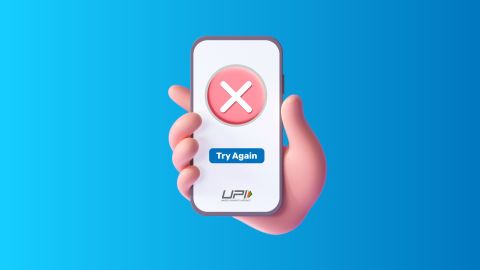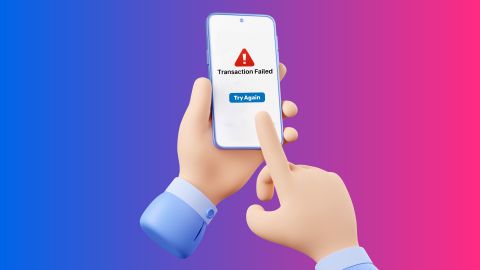Waste to energy harnesses waste materials to generate electricity, offering a cleaner, sustainable power source while reducing landfill waste and carbon emissions.
What is waste to energy?
-
-
Waste-to-energy (WTE) is an innovative solution that converts non-recyclable waste into usable energy forms such as electricity and fuel. This process reduces landfill waste, mitigates greenhouse gas emissions, and provides a sustainable energy source.
As we harness this clean power, we must efficiently manage our electricity bills. Bajaj Finserv offers a convenient platform for making electricity bill payments through Bajaj Pay. For seamless transactions and to stay updated on your payments, consider using Bajaj Pay for your electricity bill payments.Know about waste-to-energy
Waste-to-Energy (WTE) is a sustainable solution for managing waste while generating energy. It involves the process of converting non-recyclable waste materials into usable forms of energy, such as electricity, heat, or fuel. This approach not only reduces landfill dependency but also supports energy needs.Benefits of Waste to Energy solutions
Waste-to-Energy solutions offer a multitude of benefits, making them an integral part of modern waste management systems.- Firstly, they significantly reduce the volume of waste sent to landfills, alleviating environmental concerns like soil and groundwater contamination.
- Secondly, WTE technologies generate renewable energy, aiding in the reduction of greenhouse gas emissions compared to fossil fuels.
- Additionally, they help in recovering valuable materials like metals during the process, contributing to a circular economy.
Types of Waste to Energy technologies
Several advanced technologies are used to convert waste into energy.- Incineration, the most common, involves burning waste at high temperatures to produce heat, which is then used to generate electricity.
- Gasification and pyrolysis break down organic materials in the absence of oxygen to produce syngas, which can be used as fuel.
- Anaerobic digestion is another method, where organic waste is broken down by microorganisms to produce biogas.
How waste is converted into electricity
1. The process of converting waste into electricity typically starts with collecting and sorting waste materials.
2. Non-recyclable waste is fed into facilities equipped with technologies like incinerators or gasifiers.
3. In incineration, waste is burned, generating heat that boils water to produce steam.
4. This steam drives turbines connected to generators, producing electricity.
5. Advanced methods like gasification convert waste into syngas, which powers turbines or engines to generate electricity.
6. The entire process is designed to maximise energy recovery while minimising environmental impact.Uses of Waste-to-Energy
Waste-to-Energy projects offer versatile applications. They provide electricity to power homes, industries, and public infrastructure. The heat generated can be used for district heating systems or industrial processes.
Additionally, WTE facilities help manage waste sustainably, reducing landfill usage and producing by-products like ash, which can be used in construction materials. The biogas generated through anaerobic digestion can serve as fuel for vehicles or industrial operations, making WTE a valuable resource in energy and waste management.Importance of electricity payment online
Paying electricity bills online saves time and effort. Platforms like Bajaj Pay offer unmatched convenience:- Instant payments: No delays or long queues.
- Wide accessibility: Pay anytime, anywhere.
- Safe transactions: High-end encryption ensures secure payments. By choosing Bajaj Pay, you support sustainability through efficient energy management.
State-wise electricity bill payment
Andhra Pradesh Electricity Bill Payment Arunachal Pradesh Electricity Bill Payment Assam Electricity Bill Payment Bihar Electricity Bill Payment Chhattisgarh Electricity Bill Payment Goa Electricity Bill Payment Gujarat Electricity Bill Payment Haryana Electricity Bill Payment Himachal Pradesh Electricity Bill Payment
-
Recharge and Pay Bills
Mobile Prepaid
Mobile Postpaid
Broadband Bill Payment
Electricity Bill Payment
Bajaj Finserv App for All Your Financial Needs and Goals
Trusted by 50 million+ customers in India, Bajaj Finserv App is a one-stop solution for all your financial needs and goals.
You can use the Bajaj Finserv App to:
You can use the Bajaj Finserv App to:
- Apply for loans online, such as Instant Personal Loan, Home Loan, Business Loan, Gold Loan, and more.
- Explore and apply for co-branded credit cards online.
- Invest in fixed deposits and mutual funds on the app.
- Choose from multiple insurance for your health, motor and even pocket insurance, from various insurance providers.
- Pay and manage your bills and recharges using the BBPS platform. Use Bajaj Pay and Bajaj Wallet for quick and simple money transfers and transactions.
- Apply for Insta EMI Card and get a pre-approved limit on the app. Explore over 1 million products on the app that can be purchased from a partner store on Easy EMIs.
- Shop from over 100+ brand partners that offer a diverse range of products and services.
- Use specialised tools like EMI calculators, SIP Calculators
- Check your credit score, download loan statements and even get quick customer support—all on the app.
Frequently asked questions
How does waste to energy work?
Waste-to-energy works by converting non-recyclable waste into usable forms of energy like electricity, heat, or fuel. Processes like incineration burn waste at high temperatures, generating steam to drive turbines and produce electricity. Alternatively, methods such as gasification and pyrolysis break down waste into syngas, which can be used as fuel.
What are the main challenges of waste to energy?
The main challenges of waste-to-energy include high initial costs for setting up facilities, emissions control to meet environmental standards, and managing the by-products like ash or slag.
What technologies are used in waste to energy?
The primary technologies used in waste-to-energy include incineration, where waste is burned to produce heat and electricity; gasification and pyrolysis, which convert waste into syngas; and anaerobic digestion, which processes organic waste into biogas.
Is Waste-to-Energy environmentally friendly?
Waste-to-energy is considered environmentally friendly when advanced emissions control systems are in place. It reduces landfill waste, cuts greenhouse gas emissions, and recovers energy from materials that cannot be recycled. However, the environmental impact depends on technology and operational efficiency.
What types of waste can be used in waste to energy?
Non-recyclable municipal solid waste, industrial waste, agricultural residues, and organic materials like food waste are commonly used in Waste-to-Energy processes.
Show More
Show Less




